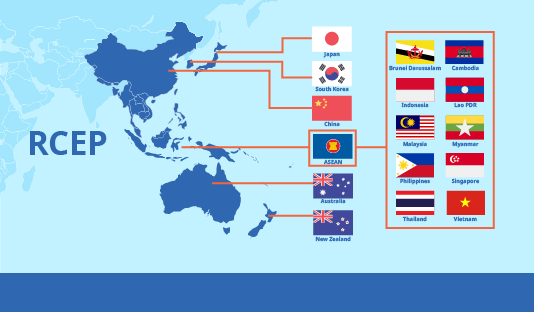China formally deposited the approval letter of the Regional Comprehensive Economic Association (RCEP) on Friday with the Secretary General of the Association of Southeast Asian Nations (ASEAN).
With this, China finalizes the RCEP approval process.
Earlier, on November 15, the 10 members of ASEAN, as well as China, Japan, South Korea, Australia and New Zealand signed the RCEP, in negotiation for eight years.
The RCEP is a free trade agreement (FTA) primarily focused on reducing tariffs for intra-regional trade in goods, effectively formalizing many existing bilateral agreements rather than promoting an entirely new framework.
According to an analysis by the US government, the RCEP avoids labor and environmental norms and rules on state-owned companies that allegedly could protect signatories against economic practices that distort China’s trade.
Despite its limited scope compared to other FTAs, the size of RCEP’s membership makes the agreement economically significant.
With members constituting 30% of global GDP and the world’s population, the trade agreement is among the largest in the world.
The uniform agreement on rules of origin stipulates that goods shipped transnationally within RCEP member states count as locally produced and qualify as duty-free as long as at least 40% of the content comes from any combination of constituent members.
RCEP
Other provisions are designed to reduce non-tariff barriers, such as customs and quarantine procedures and inconsistent technical standards.
According to the same analysis, these changes improve the flexibility and ease with which companies can establish supply chains that span multiple countries, benefiting the regional production networks of Japanese and South Korean multinationals in Southeast Asia.
While it also facilitates the expansion of Chinese companies in the region, the RCEP will likely accelerate the growing role of Vietnam, Malaysia and Thailand as alternative manufacturing destinations to China for non-Chinese multinationals.
The scope of goods, services, and regulatory standards covered in the RCEP is narrow.
The agreement covers about 90% of tariffs, comparatively low for an FTA, and is light on trade in agricultural goods and services.
Beyond its more limited scope, the RCEP in many cases codifies the elimination of tariffs on items already exempted through other agreements.
![]()

